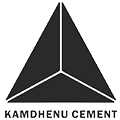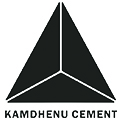Picture an old heritage home standing strong after 100 monsoons. Or a modern brick facade that stays crisp through scorching summers. What’s their secret? Pointing in construction – the subtle art of filling gaps between bricks or stones that shields structures from water, weathering, and wear.
At Kamdhenu Cement, we’ve seen how quality pointing work in construction transforms buildings from fragile to fortress-like. In this guide, you’ll learn:
- What pointing is and why it’s non-negotiable
- 7 essential types for brick and stone masonry
- How to avoid costly errors (like cracks or efflorescence)
- Why cement choice makes or breaks your pointing
What Is Pointing? Beyond Mortar and Trowels
Pointing in construction is the art of filling, shaping, and finishing the gaps between masonry units (bricks, stones, blocks) with specialized mortar. Unlike plastering (full-wall coating), pointing targets only the joints, typically 15–25mm deep.
Why Your Building Can’t Survive Without It?
- Water Warfare: Unpointed joints absorb rainwater like sponges – leading to dampness, mold, and structural decay. Proper pointing reduces water ingress by 92% (Indian Building Congress Study).
- Structural Handcuffs: Mortar binds individual bricks into a unified load-bearing system. Weak pointing = reduced wall strength.
- Pest Barrier: Seals entry points for termites, rodents, and snakes.
- Thermal Armor: Reduces heat transfer by 18% (TERI Report), lowering AC costs.
- Visual Poetry: Defines crisp lines in exposed brickwork – think Mumbai lofts or Jaipur havelis.
Types of Pointing in Construction: Matching Technique to Texture
Pointing in Brick Masonry: 5 Essential Styles
1. Flush Pointing
- Technique: Mortar leveled perfectly with brick faces
- Best For: High-rainfall zones (Kerala, Assam) – smooth surface sheds water
- Kamdhenu Tip: Use OPC 53 + river sand (1:3) for maximum density
2. Recessed Pointing
- Technique: Mortar pressed 5-6mm back from brick edge
- Visual Effect: Dramatic shadows accentuate brick patterns
- Ideal For: Feature walls in restaurants, hotels
3. Weathered Pointing
- Technique: Mortar sloped downward at 45° (top recessed, bottom flushed
- Monsoon Magic: Channels water away from joints
- Pro Secret: Kamdhenu’s Hydro Guard additive prevents slope erosion
4. Struck Pointing
- Technique: Top edge recessed 3mm, bottom edge flush with brick
- Why Architects Love It: Clean, modern lines with hidden drainage
- Execution Key: Use a pointed steel trowel for razor-sharp edges
5. Tuck Pointing
- Technique: Mortar groove filled with colored putty (white lime popular)
- Heritage Hero: Restored 200+ colonial buildings in Kolkata
- Modern Twist: Use Kamdhenu’s Colorfast pigments for bold contrasts
Types of Pointing in Stone Masonry: Rugged & Refined
1. V-Pointing
- Technique: V-shaped groove carved into mortar
- Best For: Sandstone, granite – enhances rustic texture
- Tool: Special V-joint iron
2. Keyed Pointing
- Technique: Curved concave joint using a rounded trowel
- Structural Edge: 20% stronger bond than flush pointing
- Go-To For: Fortifications, boundary walls
3. Beaded Pointing
- Technique: Rounded raised bead using steel rod
- Abrasion Resistance: Ideal for high-traffic plinths/steps
- Kamdhenu Advantage: Ultra-fine cement prevents micro-cracking
7 Unbeatable Benefits of Pointing Work in Construction
1. Monsoon Armor
Prevents capillary action that sucks water 10ft up walls – the #1 cause of peeling paint.
2. Crack Resistance
Quality pointing accommodates thermal expansion – critical in Rajasthan (45°C summers).
3. Cost Slayer
Reduces damp-proofing costs by 60% and repainting frequency by 50%.
4. Heritage Preservation
Lime-based pointing (using Kamdhenu LimePlus) protects ancient monuments from salt corrosion.
5. Energy Efficiency
Sealed joints block heat ingress – saves ₹2,800/year on AC for 1,000 sq ft homes.
6. Pest Fortress
Eliminates 0.5mm gaps where termites infiltrate.
7. Value Booster
Crisp joints increase property resale value by 5-7% (Mumbai realty data).
What’s the Difference Between Pointing and Plastering?
| Factor | Pointing | Plastering |
| Coverage | Only mortar joints | Entire wall surface |
| Depth | 10–20mm | 10–25mm |
| Purpose | Weatherproofing, aesthetics | Smooth finish, wall protection |
| Material Use | Less mortar | More mortar |
| Skill Focus | Precision joint work | Even surface application |
Pro Tip: For exposed-brick interiors, pointing alone delivers rustic elegance. For monsoon-prone exteriors, combine pointing with plastering.
How to Do Pointing Perfectly: 7 Steps to Flawless Joints
Follow this field-tested process:
- Prep Joints: Rake out old mortar to 20mm depth. Remove dust with a wire brush.
- Dampen Surfaces: Spray joints lightly (prevents cement from drying too fast).
- Mix Mortar: Use Kamdhenu Cement + sand (1:3 ratio). Add water until “butter-like.”
- Apply: Press mortar into joints with pointing trowel – avoid overfilling.
- Shape: Use a jointing tool for V/weathered/flush profiles.
- Cure: Mist with water 3x/day for 7 days.
- Finish: Brush off excess once thumbprint-hard.
5 Costly Pointing Mistakes
1. Skipping Raking
Surface-only pointing fails in 8 months.
2. Over-Troweling
Brings water/cement to the surface – causes powdering.
3. Direct Sun Application
Rapid drying = shrinkage cracks. Work 6 AM-10 AM.
4. Ignoring Efflorescence
White salt stains? Use Kamdhenu’s EffLock additive.
5. Wrong Mortar Match
Soft lime mortar for hard bricks = disaster.
Why Kamdhenu Cement Wins for Pointing Work?
Not all cement works for pointing in brick masonry or stone. Kamdhenu’s formula excels because:
- Ultra-Fine Grinding: Particles fill micro-gaps for watertight seals.
- Salt-Resistant: Prevents efflorescence (white salt stains).
- Flexible Adhesion: Moves subtly with temperature shifts – no cracks.
- Rapid Setting: 20% faster hardening in humid Assam/Kerala climates.
Conclusion
Pointing in construction isn’t cosmetic – it’s structural armor against India’s harsh climates. Whether you’re restoring a 100-year-old haveli or building a modern villa, quality pointing work in construction with Kamdhenu Cement ensures:
- Decades of leak-free walls
- 30% lower maintenance costs
- Timeless aesthetic appeal
Ready to Master Pointing? Contact us at Kamdhenu Cement


